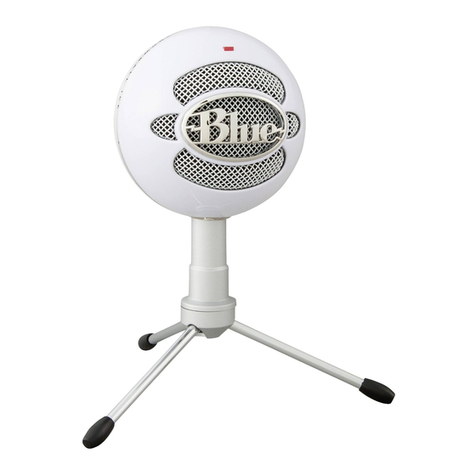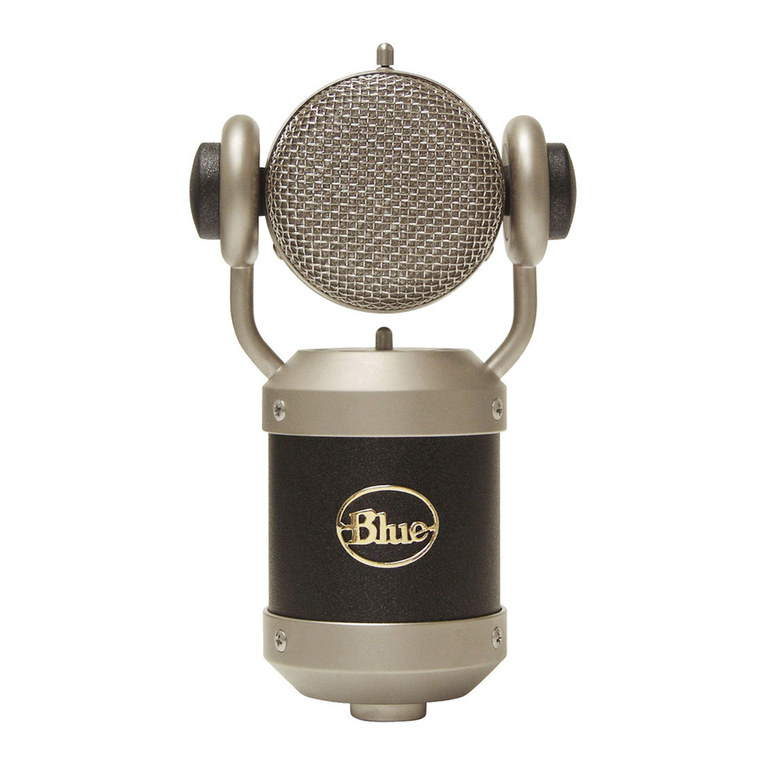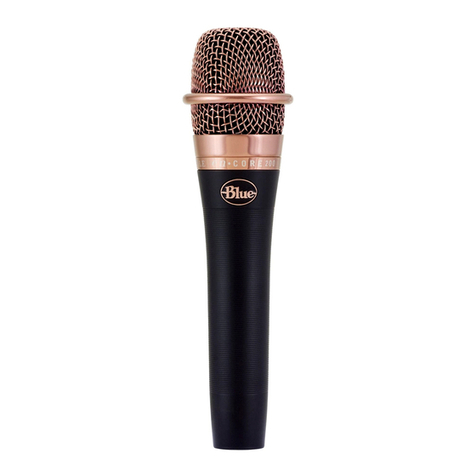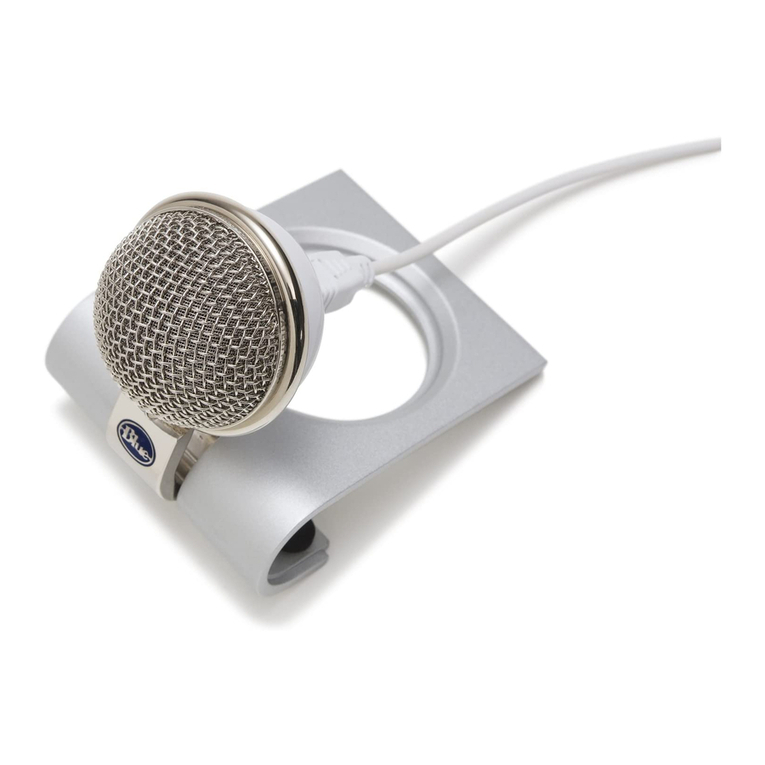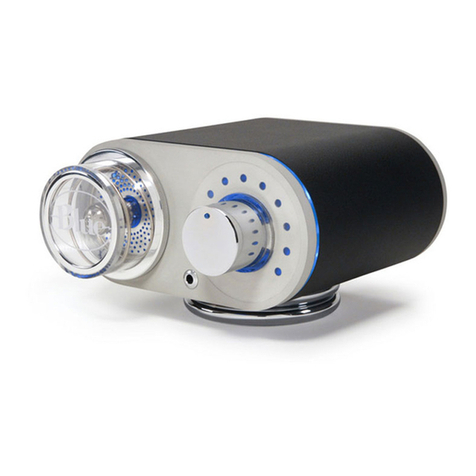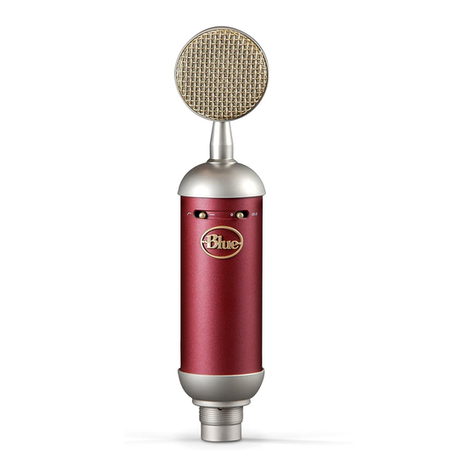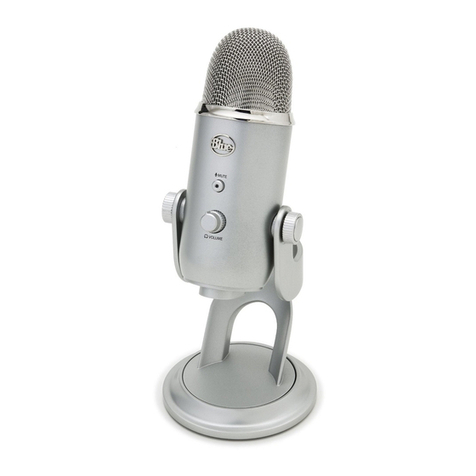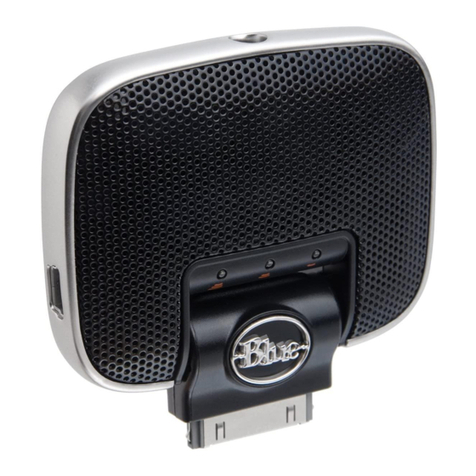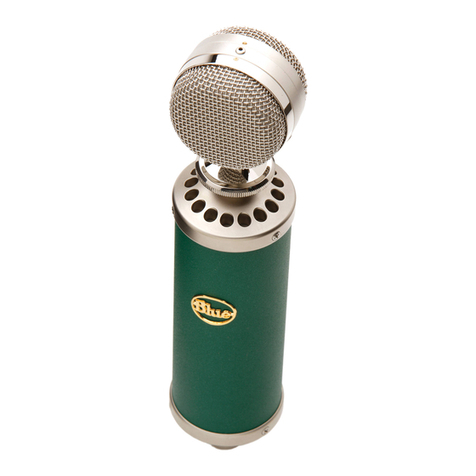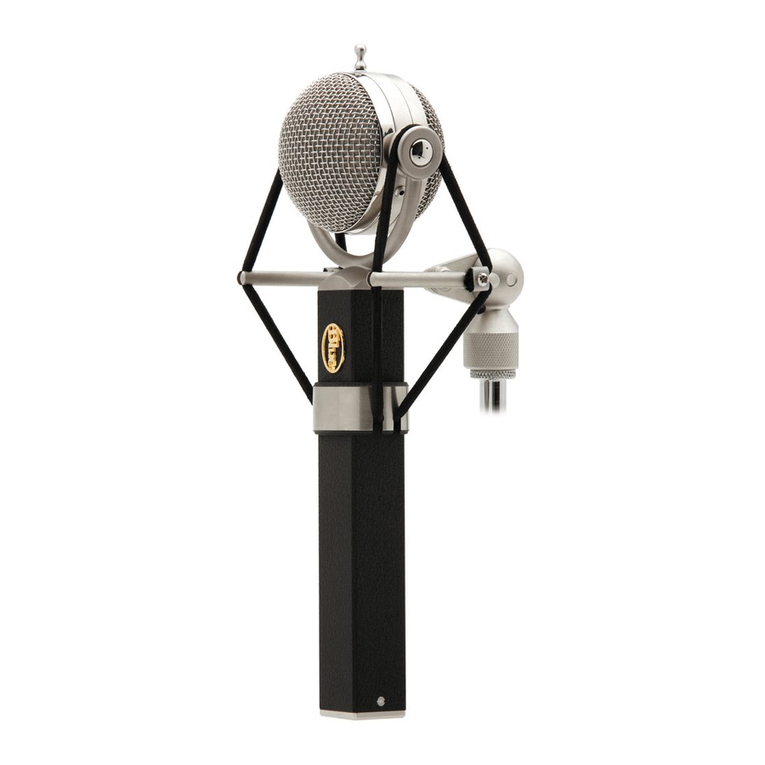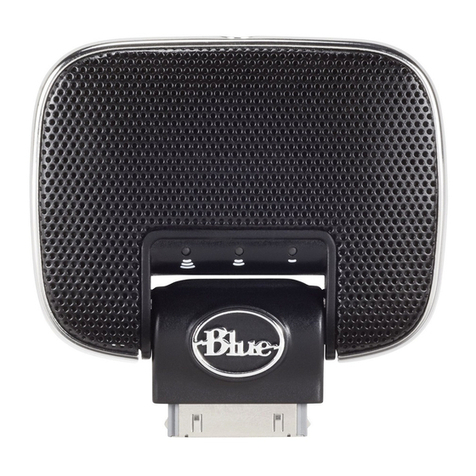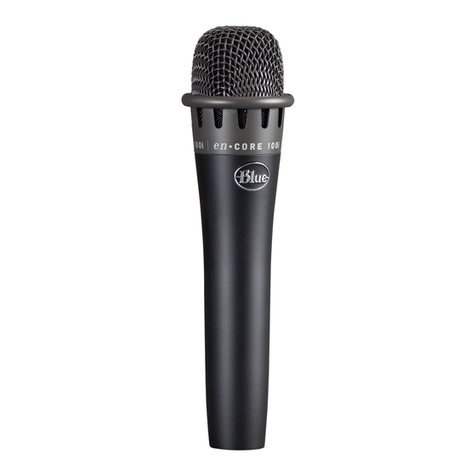To get the most out of any quality microphone, it is essential to pair it with
a good microphone pre-amplifier. We recommend Blue’s
Robbie,
a single-
channel Class A discrete vacuum tube mic
and instrument preamp. To maintain the
integrity of your signal, we suggest using our
Kiwi, Cranberry
or
Blueberry
high-definition
microphone cables. And whenever possible,
connect the mic preamp output directly to
your recorder or A/D converter, bypassing
any unnecessary components.
The Baby Bottle includes a vintage-style
shockmount designed to isolate the microphone body from low frequency
vibrations when mounted on a stand. To attach the mic to the stand, you
may find it easiest to 1) loosen the boom stand arm or threaded end of the
mic stand, 2) grasp the mic or shockmount assembly in one hand, and 3)
screw the mic stand threads into the mount. This procedure eliminates
any possibility of dropping or damage to the mic.
NOTE: Forceful positioning of the shockmount without loosening
of the thumbscrew can result in damage not covered by warranty.
The Baby Bottle requires +48 volt phantom power, which is provided by
most mic preamps, mixing consoles, or separate phantom power supplies.
It is important to note that some units, though rated at 48 volts, may sup-
ply insufficient or unstable phantom power, which can result in distortion
and/or degraded performance when used with this microphone.
To avoid damage to audio components when connecting phantom power,
follow this simple procedure: 1) turn down the mic preamp gain, head-
phones, and your studio monitors, 2) connect microphone cable to the
Baby Bottle and microphone input jack, 3) turn on phantom power, 4) turn
up the mic preamp gain, etc. To disconnect or re-route the Baby Bottle, 1)
turn down the mic preamp gain, headphones, and your studio monitors, 2)
turn off phantom power and wait 30 seconds before disconnecting the mic.
So, now that you’re familiar with the mic, here are some recording tips
that will allow you to get the most out of your Baby Bottle.
Vocals
Here’s a little-known secret — vocalists love singing
into unique and impressive mics like the Baby Bottle.
Put it in front of any singer and you are guaranteed to
get a 110% inspired performance. For a “big” vocal
sound, get the vocalist within one to four inches of the
capsule. There is no need to worry about overloading
the microphone, but be sure to use the pop filter
included with the mic to protect the diaphragm. Tilt the microphone up
(toward the forehead) for more projection and head tone, straight on at
the mouth for maximum brightness and intelligibility, or down toward the
chest for more robust full lows and smoother highs.
Electric Guitar
Because of its full midrange response, the Baby Bottle is an
excellent mic for any clean or distorted amp sound. Orient the
capsule toward the center of the speaker to capture more
highs, or toward the edge of the cone for a fuller sound with
more low end. For overdriven or distorted tones, move the mic
towards the outer edge of the cone, or back it away from the
amp a foot or more to add a little room sound and soften the
extreme high end. Give the Baby Bottle a try on electric bass,
blues harmonica, and organ too!
Acoustic Guitar
Large diaphragm mics require careful placement when
used on acoustic guitar, but the Baby Bottle’s rich tone
and hot output is well-suited to this job. For a balanced
sound with plenty of sparkling high end, place the micro-
phone facing the guitar neck, right where the neck joins
the body (usually around the 12th – 14th frets). For
starters, keep the mic as close as possible, and tilt the
capsule toward the soundhole to capture a blend of low
end and pick sound. If you need more lows, move the
microphone closer to the soundhole. For more high end
detail, move the Baby Bottle farther from the guitar, either at the same
neck position, or above the instrument up by the guitarist’s head.
These frequency charts are only a beginning. It gives the recordist a basis of the sound provided. How the microphone reacts in a particular application will differ greatly because of many variables. Room acoustics, distance from
sound source (proximity), tuning of the instrument and mic cabling are only a few of the interacting issues. For an artist or an engineer, how the microphones are used creates the basis of the sound.
